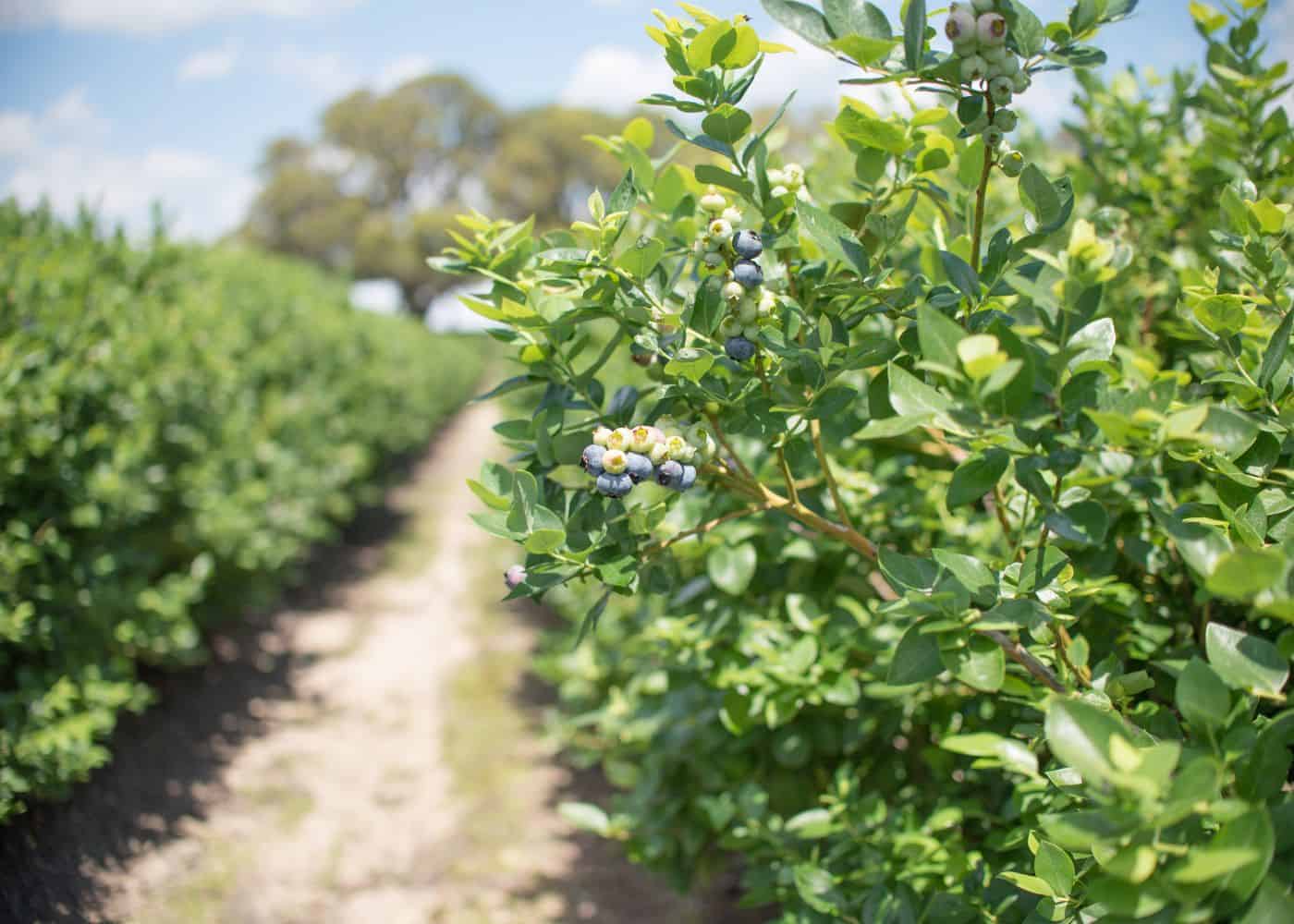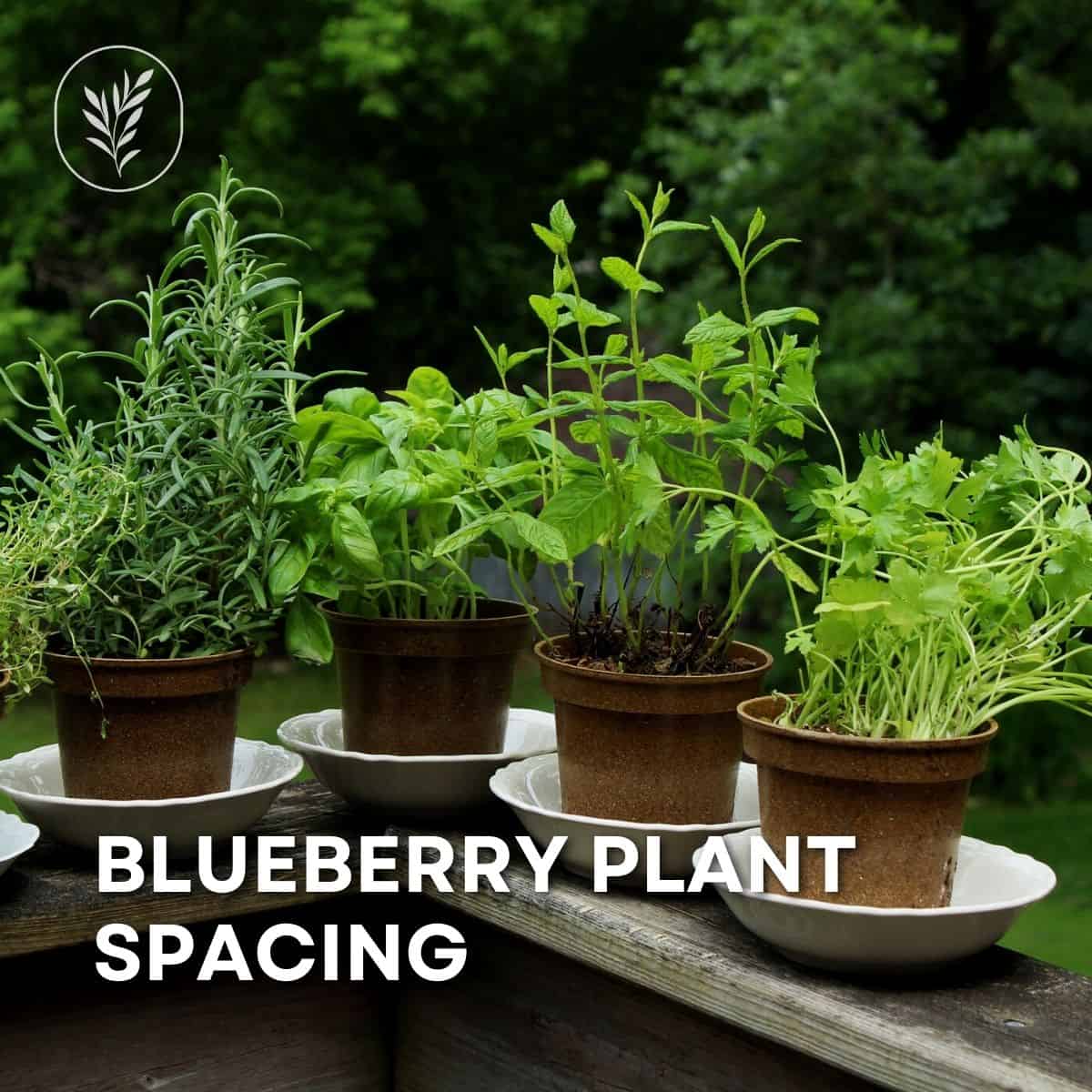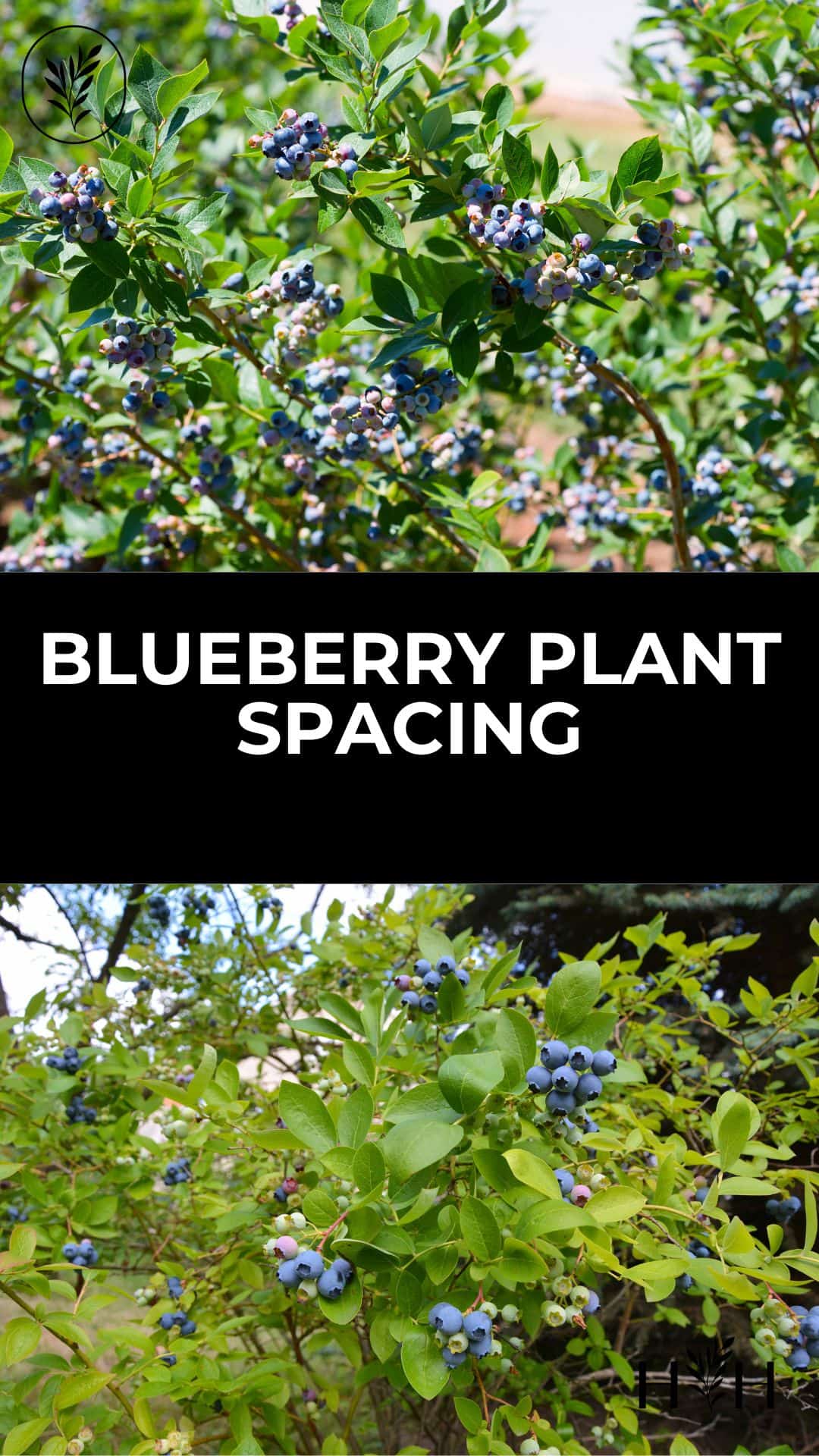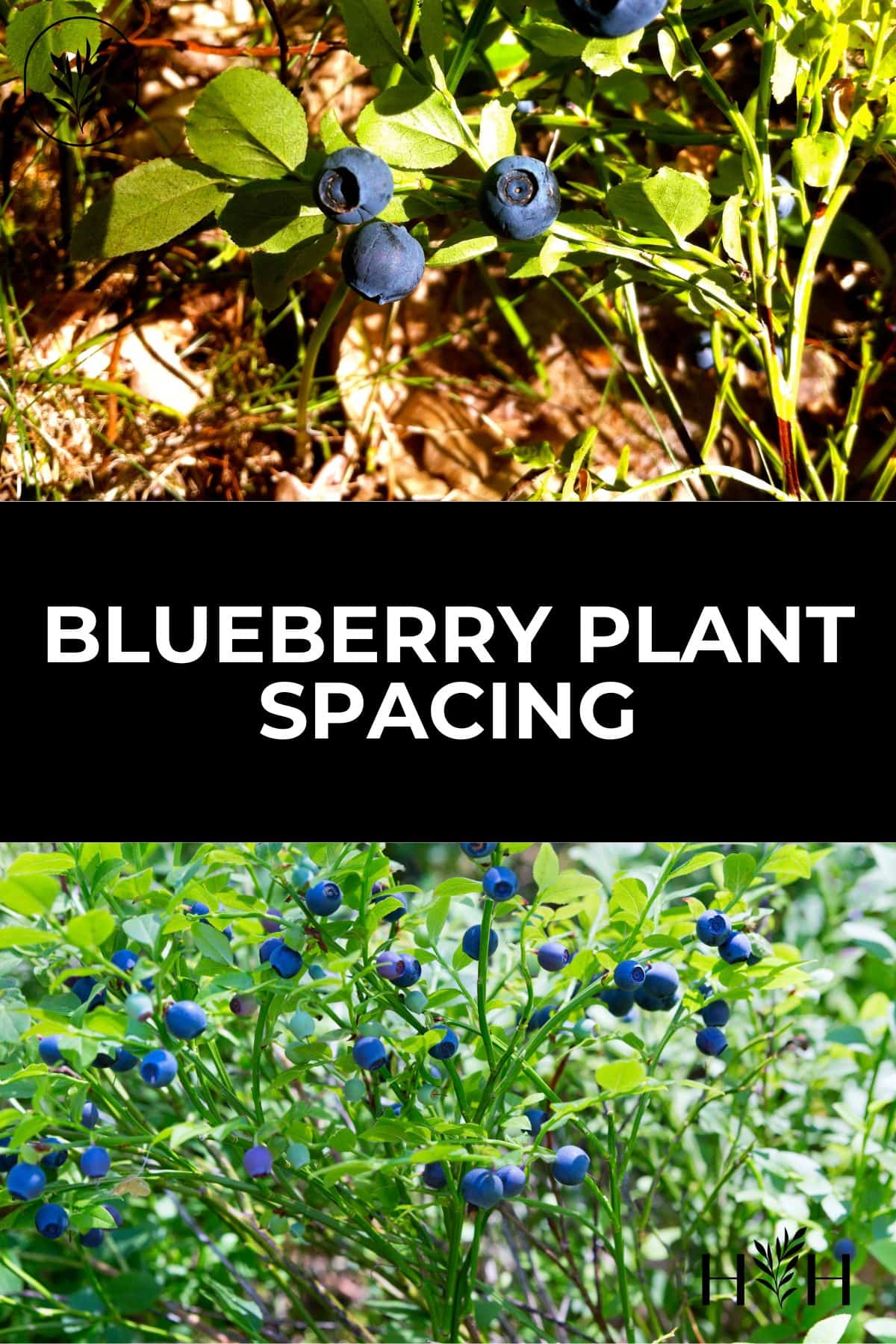If you’re planting a few blueberry bushes, its time to consider blueberry plant spacing. Whether you’re planting a whole field or just a few shrubs along a pathway, its worth figuring out how far apart to plant them before you get out the shovel.
Blueberry plant spacing requirements
When planting blueberries, it is important to consider the spacing requirements for each variety. The amount of space needed between plants depends on the type of blueberry bush you are growing and how large it will become when mature.
Blueberry shrubs are usually planted at a spacing of about 3-4 feet apart. Most varieties of blueberry plants grow to 4-6 feet tall and 3-4 feet wide. The 3-4 foot spacing can be reduced for dwarf cultivars that don’t reach 3 feet wide, or you can plant the shrubs as far apart as you like to suit your landscape design.
Spacing out your blueberries allows for optimal growth with sufficient air flow and illumination while preventing overcrowding or competition from neighboring vegetation. This allows enough room for air circulation and sunlight penetration while also allowing plenty of room for growth without overcrowding or competition from other plants nearby.
For those with limited space, consider planting two shorter bushes together instead of one taller bush. This will help save some room while still providing good production from both plants.
For blueberry plants to thrive, it’s essential that the soil pH is acidic; hence, introducing sulfur around each bush may be necessary in order to maintain an appropriate level. Additionally, avoid planting too close to trees since they can compete with your blueberries for water and nutrients which could lead to stunted growth or even death of your precious berry bushes.
Once the optimal gap for your blueberry plants is ascertained, you can begin plotting and prepping to plant.

Planting blueberries
Adding a burst of hue and taste to your garden can be accomplished by planting blueberries. Blueberries can be easily cultivated, yet for optimal growth there are some precise distancing regulations that must be observed. Here’s what you need to know about planting blueberries:
Late winter or early spring is the optimal season for planting blueberries, when the earth has softened enough to permit digging. It’s also important that you plant your blueberry bushes before the buds start swelling on the branches, which usually happens around mid-April in most areas.
Soil requirements
Blueberry plants prefer acidic soils with a pH between 4.5 and 5.5, so it’s important to test your soil before planting if possible. For attaining a desirable pH, one can incorporate sulfur or other acidifying materials such as peat moss and composted pine needles into the soil before planting.
Preparing the soil
Once you have determined that your soil is suitable for growing blueberries, it’s time to prepare it for planting. Make sure that all weeds and debris have been removed from the area where you plan on placing your new plants and then dig holes large enough (approximately 18 inches deep) so that each bush will fit comfortably inside without crowding its neighbors too much. After filling each hole with an amended soil mix (1 part peat moss + 1 part compost), gently tamp down around each plant until firmly packed in place and water thoroughly after transplanting them into their new home.
Mulching should be done two weeks after transplanting blueberry bushes into their permanent location. This helps conserve moisture levels in the root zone of these shallow-rooted shrubs and suppresses weed growth. Organic mulches such as wood chips are best, as they decompose over time releasing additional nutrients back into the soil.
Watering
Water deeply once every week during periods of drought or extreme heat; however, do not allow standing water near any of these delicate shrubs since this could cause root rot issues later on down the line. Instead, opt for slow soaking methods such as drip irrigation systems which provide more even coverage throughout an entire bed instead of just one spot per session – this helps ensure adequate hydration across all parts without wasting precious resources either.
Pruning should only be done when necessary; generally speaking, this means removing dead branches/leaves during late winter months while also thinning out overly dense foliage periodically throughout summertime months (this helps promote better air circulation). Additionally, keep an eye out for pests and diseases such as aphids and powdery mildew which may require special treatments depending upon severity levels encountered. Always consult with local experts first though before attempting any chemical interventions yourself.
Once your blueberries are planted, it’s time to mulch around them to help retain moisture and keep weeds away. Mulching can be a fantastic method of aiding your blueberry plants in prospering within their fresh environment.
Mulching
Mulching is an important part of caring for blueberry plants. Mulching is an essential element for the health of blueberry plants; it helps keep the soil moist, stops weed growth, and provides nutrients as it decomposes. When mulching around blueberry plants, use a layer of organic material that’s at least two inches thick. Organic materials such as bark chips or shredded leaves work best. Avoid using fresh grass clippings or manure because they can introduce disease-causing organisms into your garden.
To begin mulching around your blueberries, start by removing any existing weeds and debris from the area you plan to mulch. Next, spread a covering of organic material across the ground in an even layer around each plant’s base, extending it out to encompass all exposed areas within several inches. Make sure not to pile up too much material against the stems since this could cause rot or other damage to them over time. Finally, water thoroughly after applying mulch so that it settles properly into place and begins breaking down quickly enough to provide beneficial nutrients for your plants’ roots.
By following these steps when mulching around blueberry plants you will help keep them healthy and happy. Mulch helps maintain even moisture levels in the soil which keeps their roots hydrated during hot summer days while also preventing weed growth which can compete with your berries for resources like light and water needed for optimal growth and fruiting production. Additionally, adding an organic layer on top of your soil also provides essential minerals like nitrogen which are vital for strong root development as well as lush foliage growth throughout springtime months.
Mulching helps to retain moisture, reduce weeds and protect the blueberry plants from extreme temperatures. Now that we’ve discussed mulching, let’s move on to watering your blueberry plants for optimal growth.
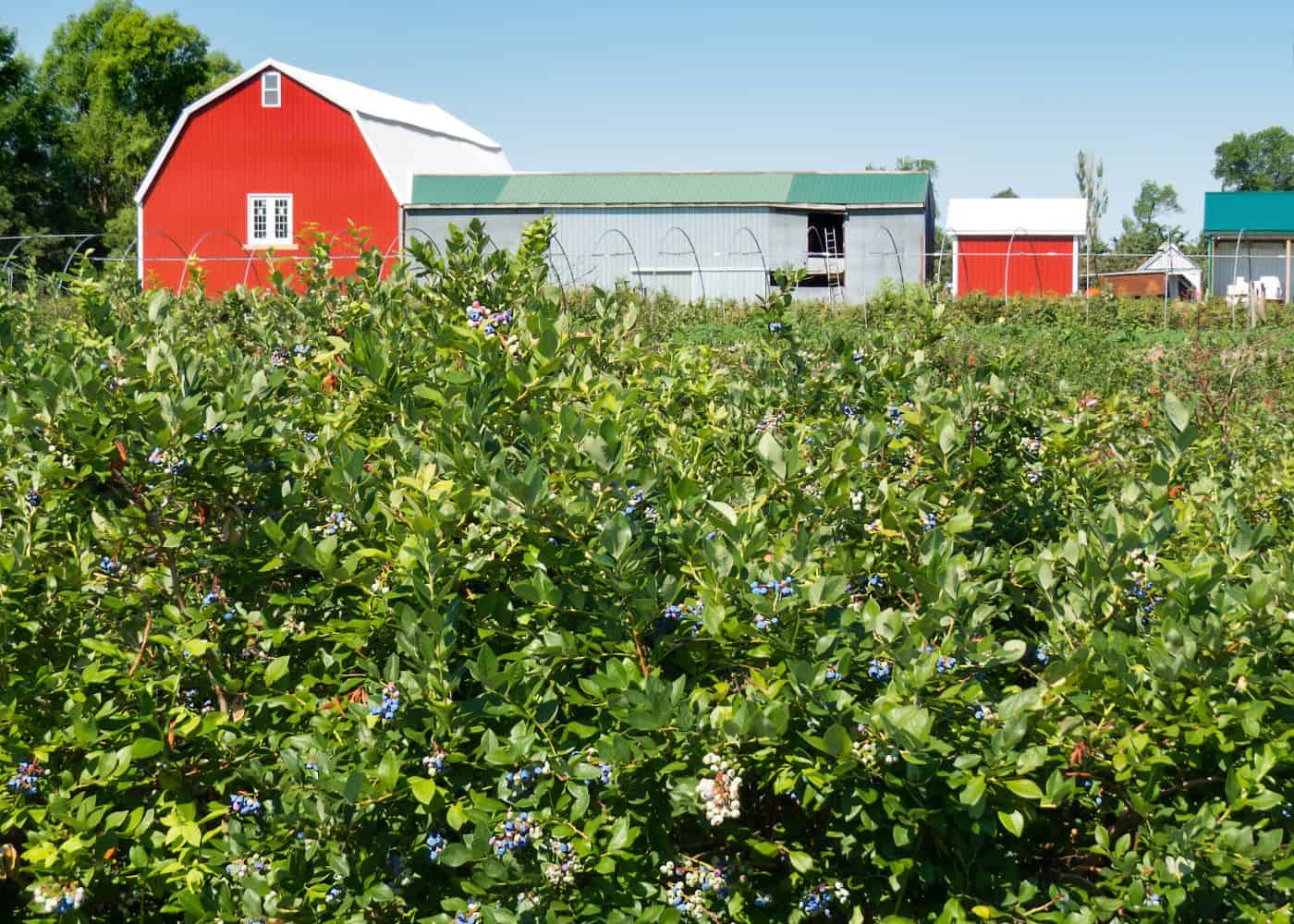
Watering
Watering blueberry plants is essential for them to thrive. Blueberries need 1-2 inches of water per week, either from rainfall or manual watering. Water deeply and slowly so that the soil can absorb it properly. It’s best to water in the morning before temperatures rise too high as this will help prevent disease and evaporation. If you have sandy soil, you may need to water more often than if your soil is heavier with clay content.
If possible, use a drip irrigation system or soaker hoses which deliver water directly to the roots of the plant without wetting its leaves or stems; this helps reduce disease problems caused by excess moisture on foliage. Make sure not to over-water your blueberry plants as they are prone to root rot when overwatered – stick your finger into the top inch of soil and if it feels moist then wait until it dries out before watering again.
When planting new blueberry bushes, make sure they get an extra deep soak right after planting; keep up regular watering until their roots become established (usually within 2 weeks). During hot summer months, supplement natural rainfall with additional weekly watering sessions in order for your plants to stay healthy and produce abundant fruit yields come harvest time.
Ensuring optimal growth and abundant yields necessitates proper watering of blueberry plants, but also the judicious timing and execution of pruning.
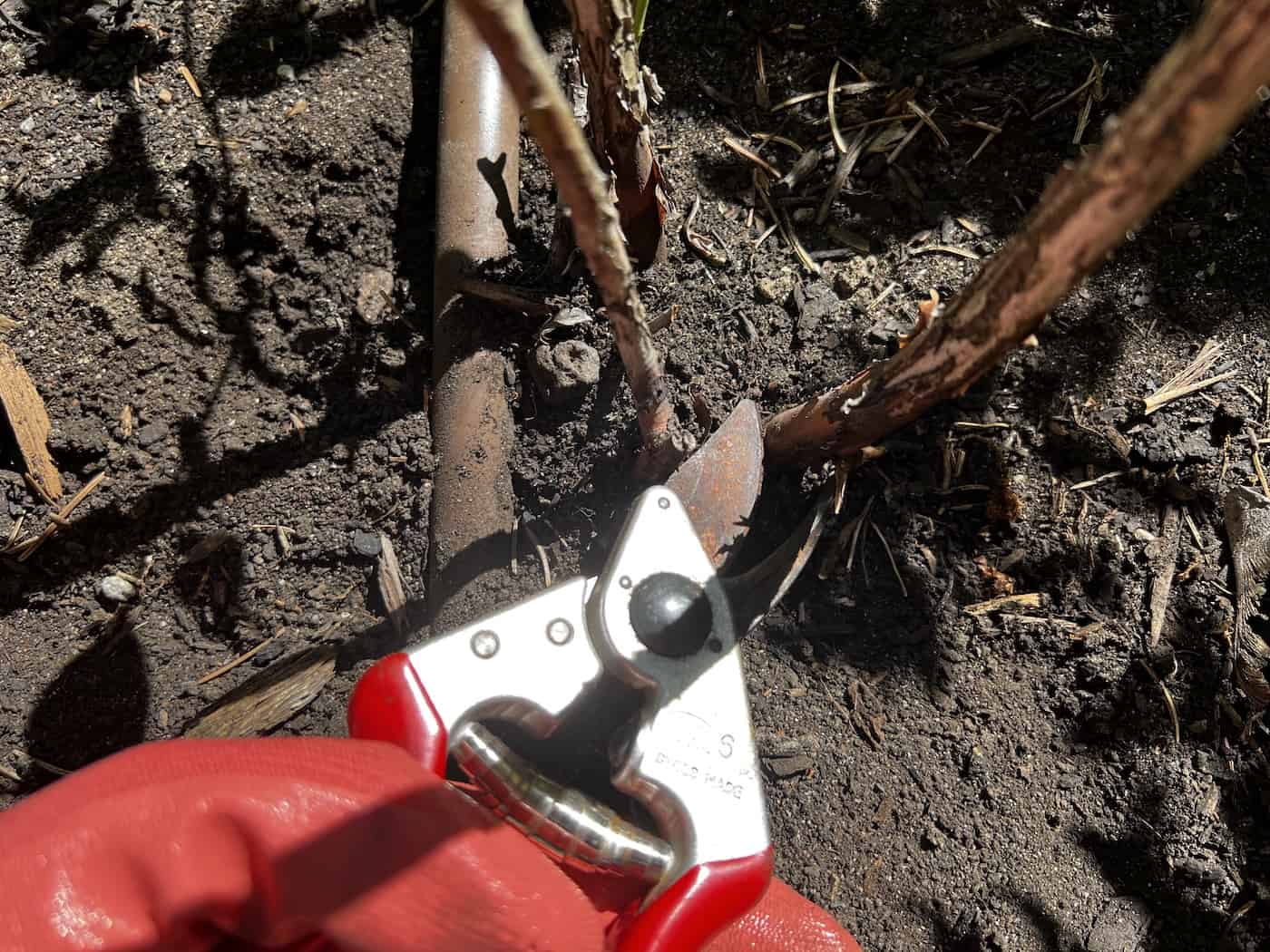
Pruning & maintenance
Pruning and maintenance of blueberry bushes is an important part of ensuring a healthy, productive plant. Pruning helps to keep the bush in shape, encourages new growth, and can help prevent disease. It’s best to prune blueberries during the late winter or early spring before new growth begins.
When it comes to tools for pruning blueberries, you will need sharp bypass hand shears or loppers for larger branches. You should also have a pair of gloves and safety glasses handy as well as a ladder if necessary for taller plants.
The first step when pruning your blueberry bush is to remove any dead or diseased wood from the plant. This includes twigs that are brown in color with no green buds present at their tips. Cut these back until you reach healthy wood beneath them so they don’t spread disease throughout the rest of your plant.
Next, look for any weak stems that are growing too close together on the same branch and cut those back as well so they don’t compete with each other for resources like sunlight and water which can lead to reduced fruit production later on down the line.
Once all deadwood has been removed from your bush, it is time to start shaping it up by removing excess branches that are growing outwards away from its center structure. This includes any twigs that may be crossing over one another or heading off in different directions than what was intended when planting the bush originally (known as “heading cuts”). It is important not to take off more than a third of total foliage per year, as this could cause shock within the plant and lead to stunted growth later on.
Finally, once all desired shaping has been done, give your newly trimmed bush some extra love by mulching around its base with organic material such as bark chips or straw. This will help retain moisture levels while keeping weeds away from competing with its root system for nutrients found within soil near where it was planted at home. This will ultimately result in better overall health and productivity long-term.
FAQs for blueberry plant spacing
How many blueberry bushes should I plant together?
The number of blueberry bushes you should plant together depends on the size and shape of your garden. Generally, it is best to plant 3-5 bushes in a single row or clump for optimal pollination and fruit production. If you have limited space, 2-3 plants can be planted together but will produce fewer berries than if more were planted. Consider spacing them at least 4 feet apart from each other to allow adequate room for growth and air circulation.
How close do blueberry bushes need to be to pollinate?
For best results, it is recommended to plant two or more varieties of blueberries with overlapping bloom times within 50-100 feet of each other. This will ensure a greater number of bees and other pollinators visit the flowers and aid in cross-pollination.
What can you not plant near blueberries?
Blueberries require acidic soil to thrive, so it’s important to avoid planting alkaline-loving plants nearby. Examples of plants to avoid planting near blueberries include spuds, aubergines, tomatoes, and capsicums. Additionally, blueberry bushes need plenty of space for their roots to spread out and access nutrients in the soil; therefore you should not plant anything too close that could compete with them for resources.
Before you go…
In conclusion, blueberry plant spacing is an important factor to consider when planting and maintaining your blueberry bushes. With the right amount of space between plants, you can ensure that each bush has enough room to grow and thrive. Mulching, watering, and pruning are all essential components for keeping your blueberries healthy. By following these steps with proper spacing in mind, you’ll be able to enjoy a bountiful harvest of sweet berries every year.
Resources
- Companion plants for blueberries (and what not to plant nearby)
- When to fertilize blueberries: Seasonal plant food timing for blueberry bushes
- A gardener’s guide to pruning blueberries
- When to prune blueberry bushes?
- How to prune blueberry bushes?
References
- James, L. (2019). Blueberry Cultivation: A Guide On How To Grow Blueberries. Independently Published.
- Gault, K. S. (2010). The Complete Guide to Growing Your Own Fruits and Berries: Everything You Need to Know Explained Simply (p. 147). Atlantic Publishing Company.
- Beckwith, C. S. (2011). Cranberry and Blueberry Culture – With Information Relating to Growing for Profit. Read Books Ltd.
- University of Minnesota (n.d.). Pest management for home blueberry plants. University of Minnesota Digital Conservancy. https://conservancy.umn.edu/handle/11299/198099
Need more info?
Are you interested in learning more about blueberry plant leaves turning red? Here are our best articles about it!


